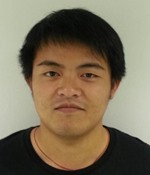Automatic Fiducial Marker Localization Via Quantitative Susceptibility Mapping (QSM) in Magnetic Resonance (MR)-Only Simulation for Radiation Therapy (RT) of Prostate Cancer
C Shen*, J Wu, Y Yan, X Jia, P Medin, A Godley, J Deng, The University of Texas Southwestern Medical Ctr, Garland, TX
Presentations
TU-A-202-3 (Tuesday, 7/12/2022) 7:30 AM - 8:30 AM [Eastern Time (GMT-4)]
Room 202
Purpose: MR-only simulation for RT permits superior soft tissue contrast and simplified workflow but implanted fiducial markers must be detected in MR images to guide treatment setup and delivery on any non-MR image-guided linear accelerator. Manual detection of fiducial markers is labor intensive and detection accuracy and efficiency are highly correlated with the clinician’s experience level. We developed a QSM-based framework for automatic fiducial detection in MRI.
Methods: QSM was computed based on the magnitude and phase images of gradient echo MRI. A binary mask containing the prostate was generated by thresholding the magnitude image. A QSM map within each mask was calculated through the local B0 field to susceptibility inversion with the background zero-referencing method. Gold fiducials can be distinguished from tissues due to the substantial difference in magnetic susceptibility. As part of the MR-only simulation workflow, a QSM-based framework was interfaced with a commercial treatment planning system (TPS) where QSM-detected fiducials were imported as DICOM structures. Detection efficiency and location accuracy were tested on a cohort of 22 patients each with three implanted fiducials in prostate. QSM-based detection efficiency was compared with manual detection by an experienced medical physicist. Detection accuracy was evaluated using CT as a reference.
Results: The proposed algorithm accurately detected 59 fiducials (89.4%) with an average displacement of 2.6mm compared to CT, while the medical physicist identified 55 fiducials (83.3%) with an average displacement of 2.5mm. With the assistance of a QSM framework, the medical physicist was able to identify 63 fiducials while the average detection time for each patient reduced from ~10min to ~2min.
Conclusion: Our QSM-based fiducial detection method achieved comparable performance to an experienced medical physicist and it helped the physicist to improve detection accuracy and efficiency. QSM-based fiducial detection has been seamlessly integrated into a commercial TPS.
Keywords
Not Applicable / None Entered.
Taxonomy
Not Applicable / None Entered.
Contact Email



